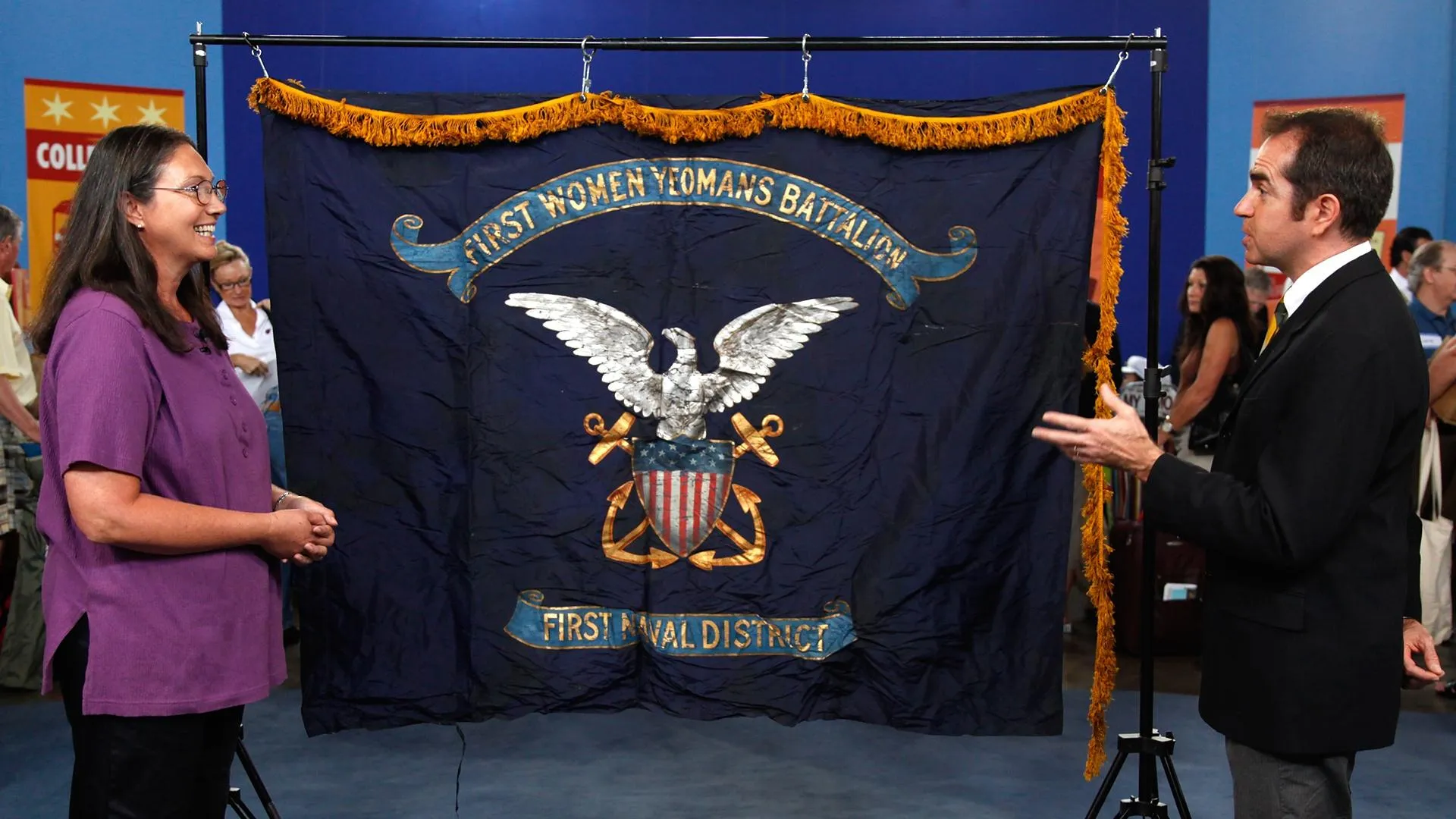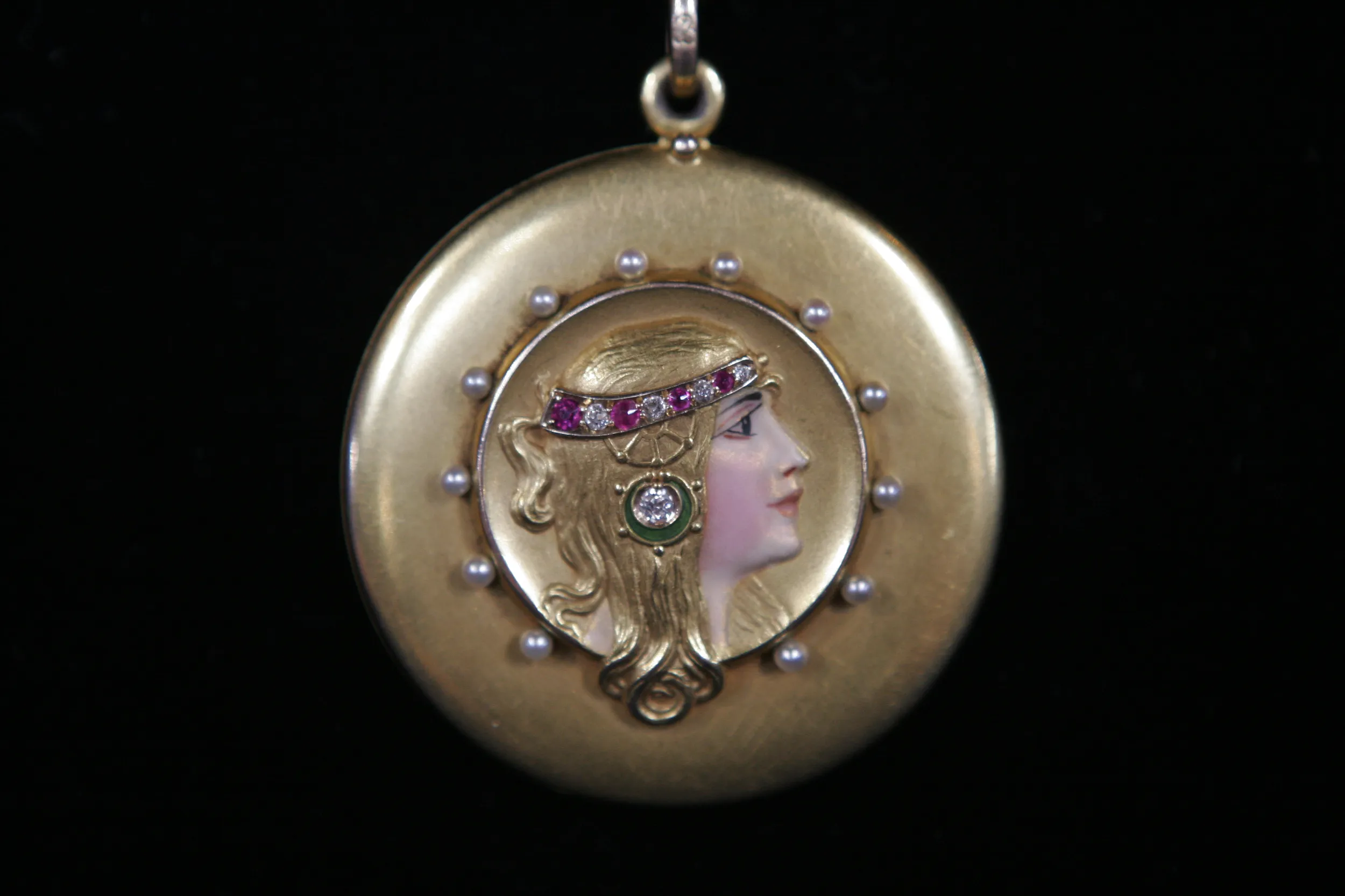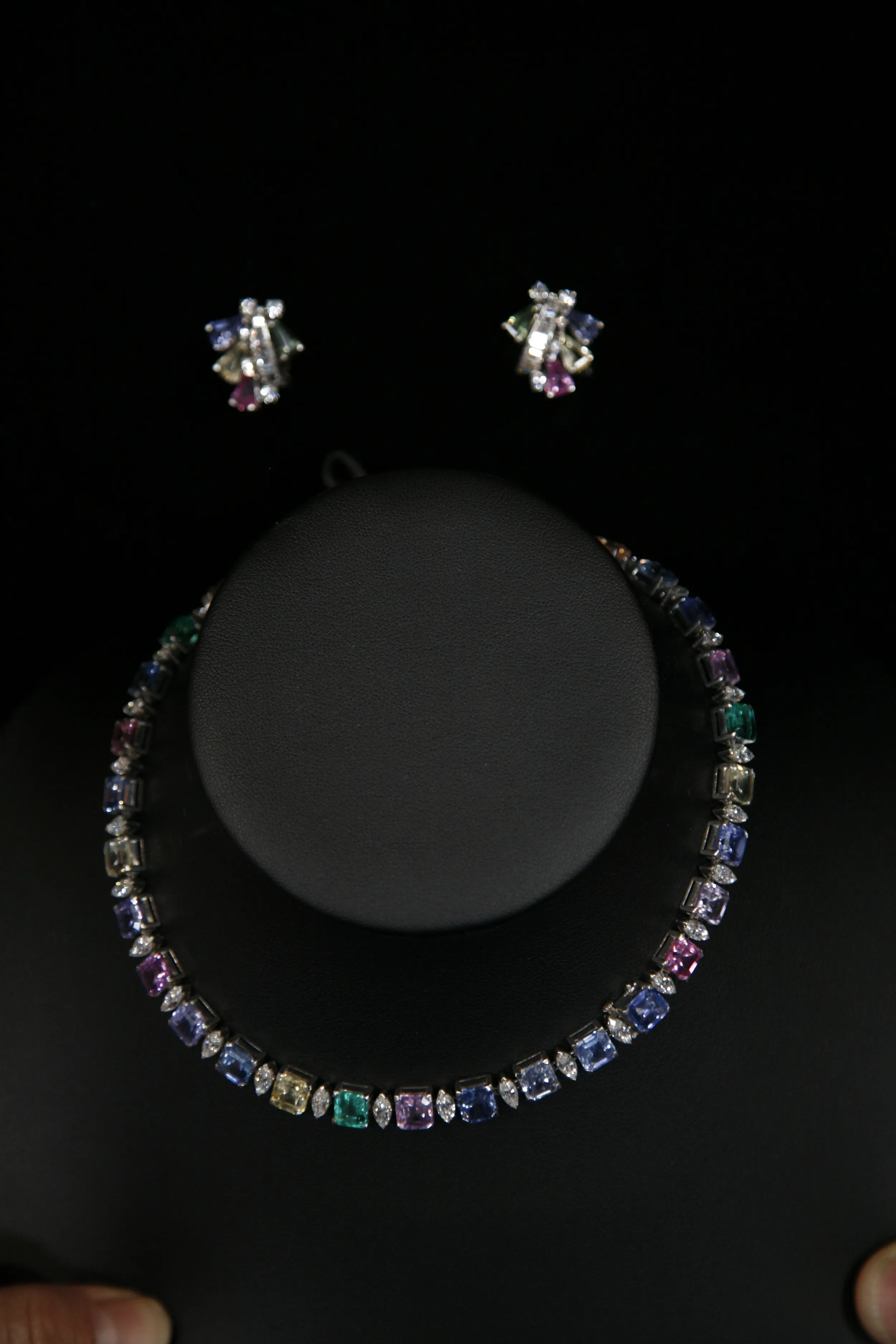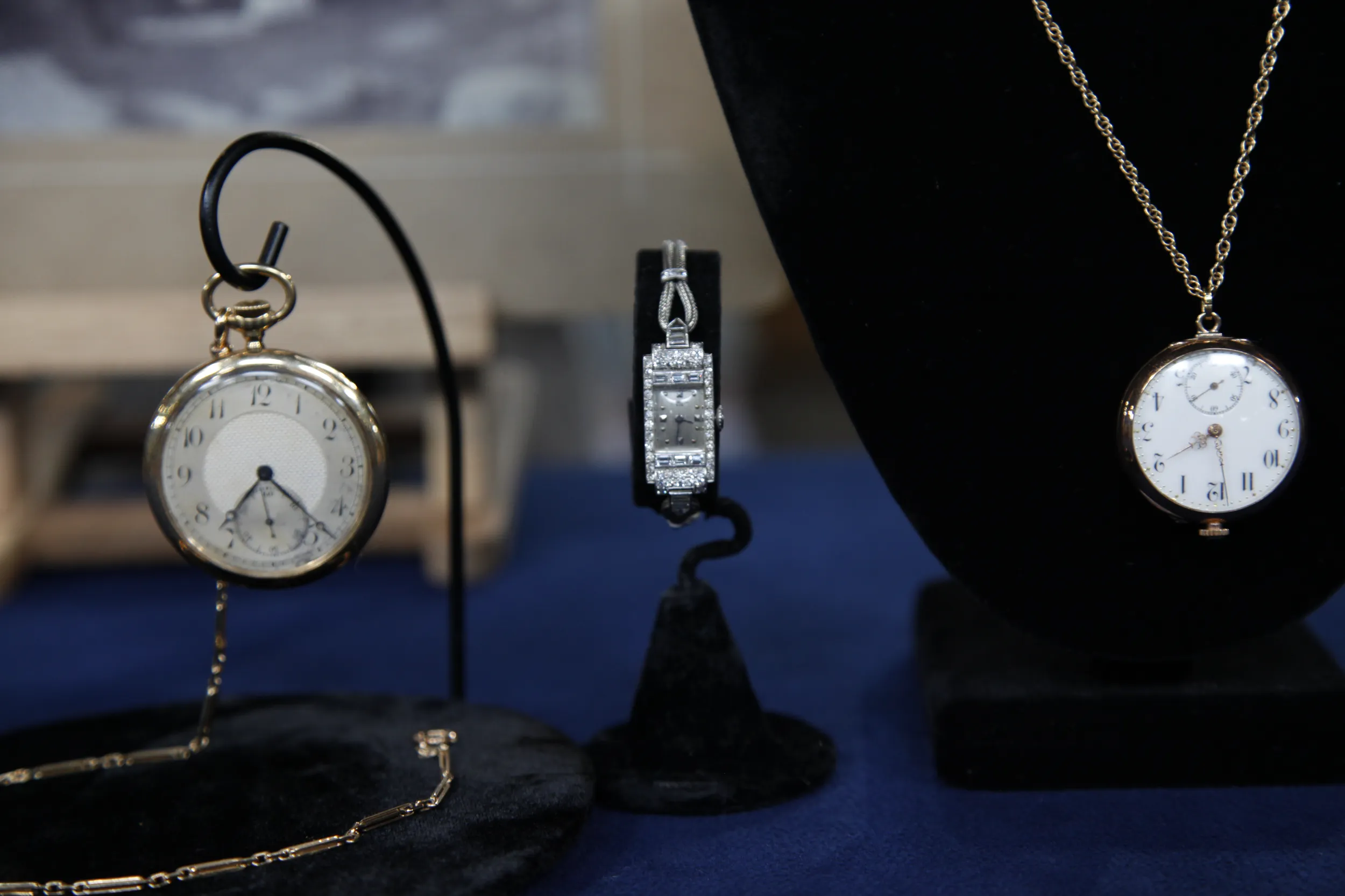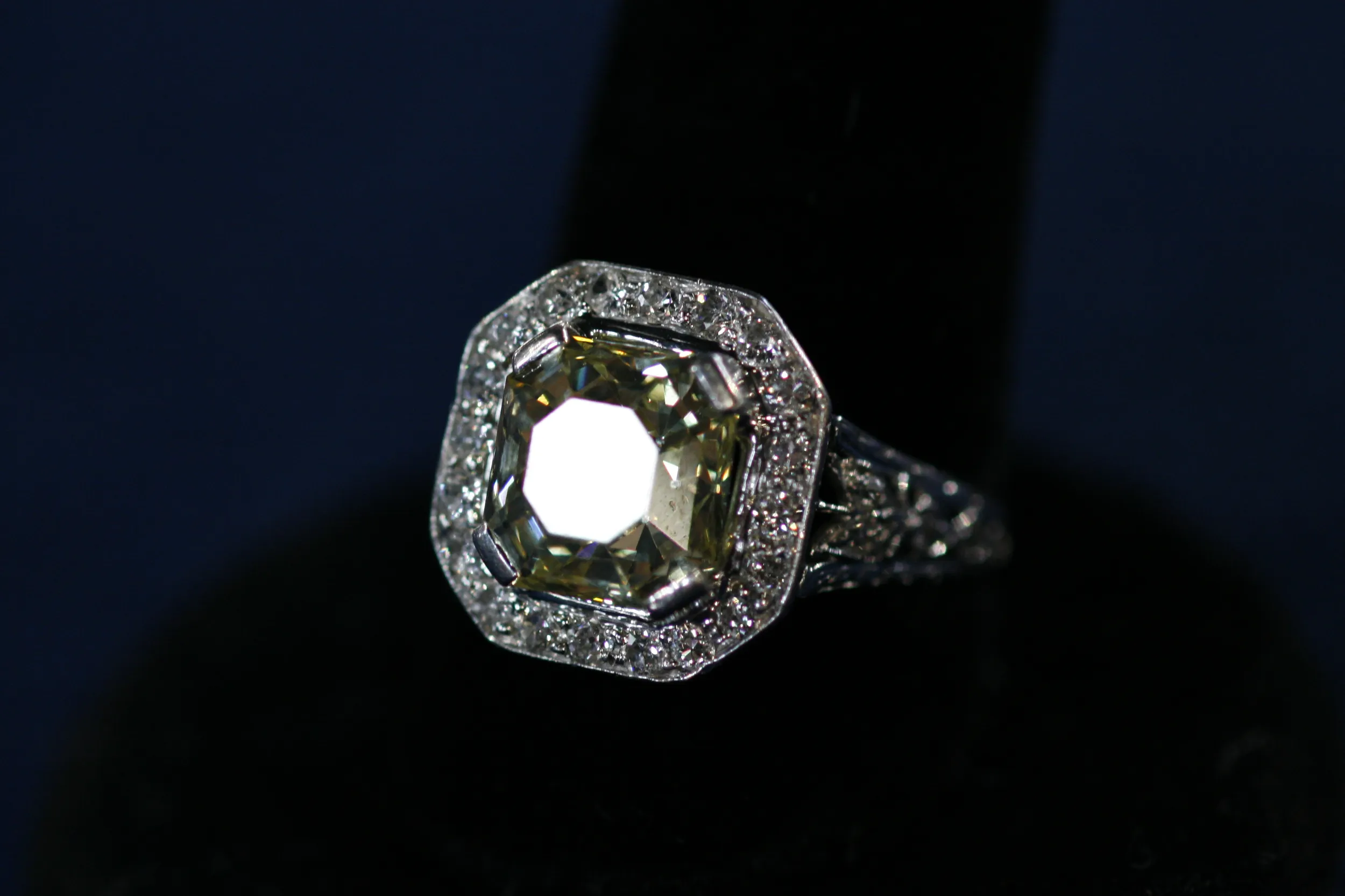GUEST: The photograph was taken around 1890 to 1900, and it's of the jewelry store in Nordmaling, Sweden.
APPRAISER: And they moved from Sweden to America?
GUEST: Yes, they came in two waves.
APPRAISER: Did they remain in the jewelry industry?
GUEST: Oh, absolutely. All my uncles were watchmakers, and they worked in repair shops in Chicago, Illinois.
APPRAISER: Well, why don't you go through and explain what you know about the watches, then.
GUEST: The first one over here on the gold chain necklace, that belonged to my grandmother, and it looks upside down, but for the woman who wears it, then she can lift it up and it's in a correct position so she can tell the time. This pocket watch belonged to my Uncle Gustin. And it's a very thin piece, but it fit very easily into a pocket and didn't create too many lumps. The other watch here belonged to my Aunt Ebba, and it's made of some kind of a platinum material, and it's very much a dress-type watch. It's not an everyday type of watch.
APPRAISER: Have you done any research in terms of their value or the makers, et cetera?
GUEST: Well, I was offered about a thousand dollars for that wristwatch at one time. These others, I've no idea what they're worth.
APPRAISER: Starting with the little lady's watch here, it's Swiss made, it's in a 14-karat-gold case. Now, although it's hanging upside down like this, it's actually been converted. And it would have been made with a bow on one side and a clip on the other side. Made around the 1900, 1910 era. One of the very first types of wristwatch. Now, when wristwatches were first being made, their manufacturers didn't want to change their manufacturing techniques...
GUEST: I see.
APPRAISER: So they simply added this little clip on the reverse side, and that look of it. It's not made by a known manufacturer, and realistically today, it's worth its gold value.
GUEST: Oh, really?
APPRAISER: It's around a hundred-dollar watch.
GUEST: Really? Okay. I'm surprised, but okay.
APPRAISER: The men's pocket watch, again in 14-karat gold, again Swiss, made in the 1920s, very classic with this style of Breguet numerals, as they're called, the chain also dating to the 1920s, also in 14-karat gold. It is much slimmer than you normally find. Again, an unsigned, very nice quality, but not by any manufacturer of known quality. It's worth slightly more than its gold value. You'd probably be looking at around $300.
GUEST: Okay.
APPRAISER: This is for auction purposes. For the lady's wristwatch in the center, it's late 1920s, early 1930s.
GUEST: Right.
APPRAISER: Very typical cocktail watch of the era. Retailed by Spaulding and Co. in Chicago.
GUEST: Mm-hmm.
APPRAISER: And I'm pleased that you didn't sell it. This, I think, is a classic case of, if someone offers to buy something, always ask for a second opinion.
GUEST: Right. Very much so.
APPRAISER: Never necessarily take the first one. The reason being, it's actually, it's made by a very well known Swiss company called Patek Philippe.
GUEST: Ah, yes.
APPRAISER: Patek Philippe are one of the most famous and also one of the highest quality Swiss brands. It's made in platinum with a platinum band, and the case is also set with diamonds. Now, the case itself is not signed Patek Philippe, but this was not that uncommon of the era. They would supply movements to very high-quality retail outlets such as Spaulding and Co., and this, as a realistic auction value, is worth $5,000.
GUEST: Oh, how nice.
APPRAISER: So I'm very pleased you didn't take the thousand-dollar offer.
GUEST: Me, too-- right.

